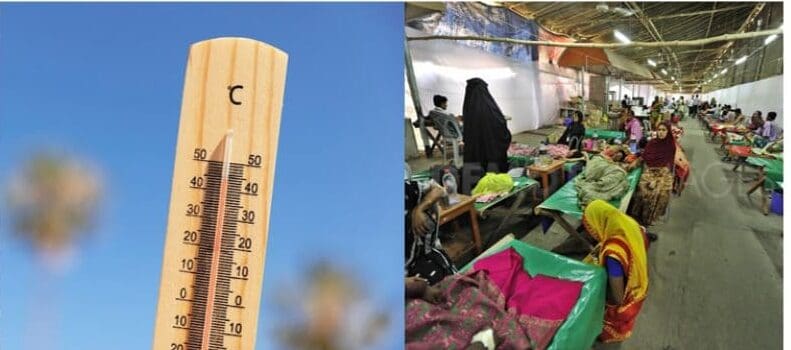A recent study projects that by 2100, hospitalizations from diarrheal diseases in Dhaka, Bangladesh, are likely to rise significantly due to climate change, even if global warming is limited to 1.5-2°C, as outlined by the Paris Agreement.
This alarming forecast comes from research conducted by Farhana Haque and colleagues from University College London, the London School of Hygiene and Tropical Medicine, and ICDDR,B, published in PLOS Neglected Tropical Diseases.
Dhaka, one of the most densely populated cities globally, already faces a substantial burden from diarrheal diseases. While past research has examined the relationship between weather and diarrhea in Bangladesh, few have explored the long-term impacts of climate change on this public health challenge. Rising temperatures and worsening water quality are expected to exacerbate the situation in the coming decades.
The researchers focused on assessing how diarrheal diseases might evolve in Dhaka under various climate change scenarios. They used meteorological data—such as daily rainfall, humidity, and temperature—alongside medical records from over 3 million diarrhea cases treated at a major hospital in Dhaka between 1981 and 2010. The study employed statistical methods to analyze how these environmental factors affected the rates of hospitalizations from diarrheal diseases across different age groups.
According to the study’s findings, higher daily temperatures were strongly correlated with an increase in diarrhea-related hospitalizations for all age groups. Even under a relatively optimistic scenario where global warming is limited to between 1.5°C and 2°C, hospitalizations due to diarrheal disease in Dhaka could rise by 4.5% to 7.4% by the end of the century. The most vulnerable group – children under five – may experience an even steeper increase, with hospitalization rates projected to rise by 5.7% to 9.4%.
Under the Paris Agreement, nations pledged to keep global temperature increases below 2°C, with an aspirational target of limiting warming to 1.5°C. Despite these commitments, the study warns that the health impacts of climate change, specifically diarrheal diseases, will remain a serious issue for Dhaka. The projected rise in hospitalizations demonstrates the need for proactive measures to bolster the city’s public health infrastructure, improve water quality, and develop disease prevention strategies.
“Diarrhoea hospitalisation will increase significantly in Dhaka by 4.5 – 7.4% in all age groups by the 2100s even if the global warming targets adopted by the Paris Agreement are reached,” the study’s authors stated. “These findings underscore the importance of better preparing the city to prevent and manage diarrheal diseases.”
Dhaka’s densely populated urban environment, combined with inadequate water sanitation systems, creates fertile ground for diarrheal diseases to spread. Addressing these challenges will require a concerted effort from public health officials, city planners, and international organizations.
Improving access to clean water, enhancing healthcare infrastructure, and implementing climate-resilient urban planning are crucial steps in reducing the impact of diarrheal diseases in Dhaka. Additionally, the study suggests that public awareness campaigns focused on hygiene and sanitation could help mitigate the risks posed by a warmer climate.
Journal Reference:
Haque F, Lampe FC, Hajat S, Stavrianaki K, Hasan SMT, Faruque ASG, et al. ‘Impacts of climate change on diarrhoeal disease hospitalisations: How does the global warming targets of 1.5–2°C affect Dhaka, Bangladesh?’, PLOS Neglected Tropical Diseases 18 (9): e0012139. DOI: 10.1371/journal.pntd.0012139
Article Source:
Press Release/Material by PLOS
Featured image: Global climate change will increase diarrhoea hospitalisation in Dhaka, Bangladesh Credit: Haque et al., 2024, PLOS Neglected Tropical Diseases | CC-BY 4.0




